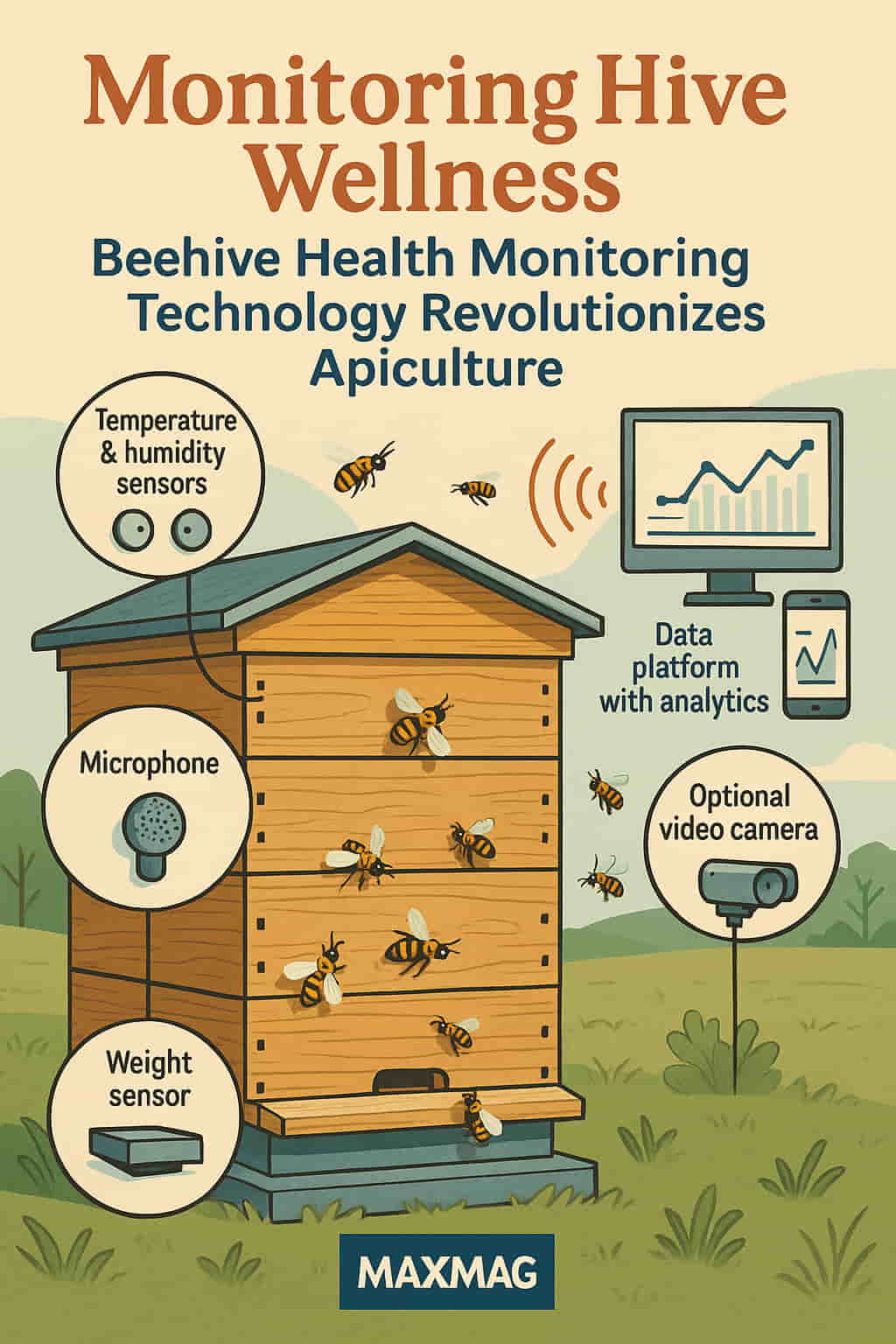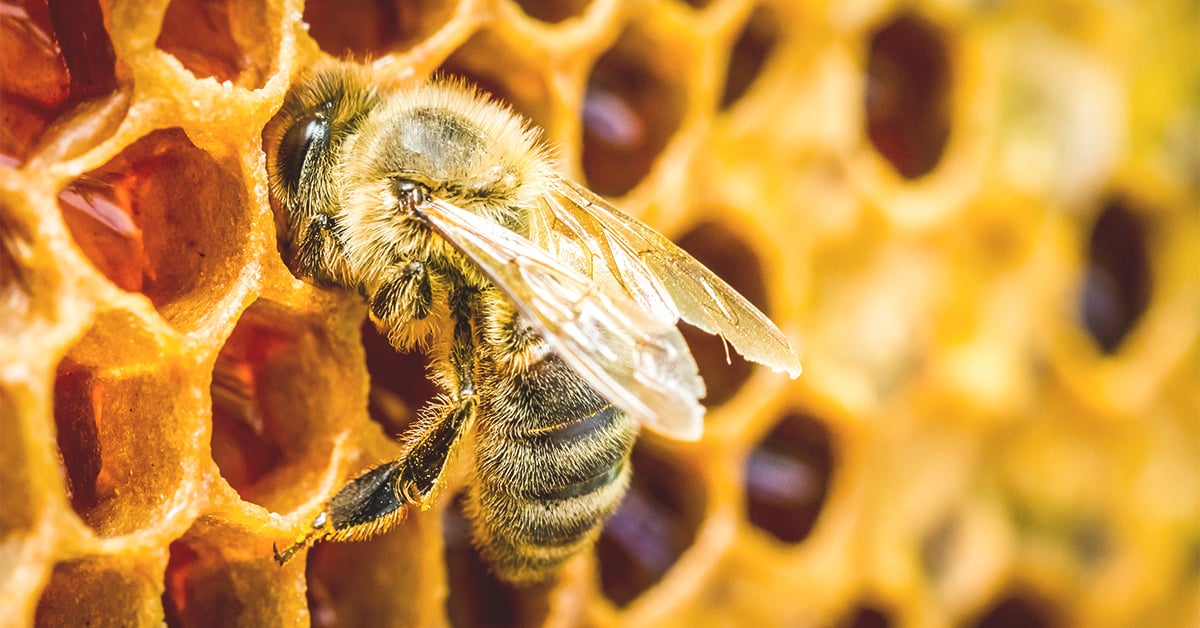
Honeybees are vital to agriculture and ecosystems worldwide. Yet many colonies now struggle to survive due to diseases, parasites, environmental stress, and pesticide exposure. A new wave of innovation—beehive health monitoring technology—is emerging to help beekeepers track and protect hive well-being before problems escalate.
What is Beehive Health Monitoring Technology?
Beehive health monitoring technology refers to a network of smart sensors, data platforms, and analytics tools installed within or around beehives. These systems typically use:
-
Temperature sensors to track the internal hive climate
-
Humidity sensors to monitor moisture levels
-
Microphones to capture the buzzing and acoustics of hive activity
-
Weight sensors to detect hive population and honey production
-
Optional video cameras with AI for real-time behavior analysis
Collected data streams are transmitted via wireless networks to platforms that visualize and interpret hive conditions, spotting early warning signs of disease, queen loss, cold stress, or environmental threats.
Why Traditional Inspections Fall Short
Generic hive checks—spotting brood patterns or weighing supers—only capture one moment in time. They often miss critical changes hidden beneath the surface. By leveraging beehive health monitoring technology, beekeepers gain:
-
Continuous, real-time insights
-
Early warning detection—e.g. varroa mites or stress
-
Improved honey yield through better timing of interventions
-
Reduced disturbance, since frequent opening of hives can upset colony harmony
As stress on pollinator populations grows, this tech offers a proactive edge.
How the System Works, Step by Step
Here’s a typical flow of beehive health monitoring technology in action:
-
Install tiny sensors inside hive walls, weighted base, or top box
-
Set up wireless connectivity—cellular, LoRa, or Wi-Fi
-
Stream multi-sensor data to cloud analytics every few minutes
-
Receive dashboard alerts when parameters exceed safe thresholds
-
Take action: Inspect for disease, add feed, improve ventilation
This seamless integration prioritizes bee welfare and supports rapid, informed decisions.
Case Study: Sound Patterns Signal Hive Trouble
A beekeeper from Saskatchewan shared a striking example. Their system’s microphone-based module detected an unusual buzzing frequency late at night—an acoustic signature known to correlate with queen loss. The beekeeper acted immediately, reintroduced a queen, and saved the colony. With manual checks, this issue likely would have gone unnoticed for days.
This highlights why beehive health monitoring technology isn’t a gimmick—it’s often the difference between colony survival and collapse.
Key Features to Seek in a System
When evaluating beehive health monitoring technology, consider these must-have capabilities:
-
Temperature & humidity sensors to maintain proper hive climate
-
Weight monitoring for tracking food stores and bee count
-
Acoustic sensors to capture buzzing dynamics
-
Data platform with analytics, ideally offering mobile access
-
Low-power wireless design to sustain long-term operation
-
Robust hardware that withstands weather and hive activity
For a comprehensive list, check out the USDA’s guidelines on precision agriculture technology: NASA-USDA remote sensing overview.
Smart Alerts: Detecting Disease & Pests
One powerful perk of beehive health monitoring technology is automatic detection of emerging issues:
-
Dramatic temperature dips at brood chamber may indicate queenlessness
-
Sudden weight loss could signal swarming or theft
-
Unique acoustics often link to pests like Varroa mites
-
Humidity spikes might signal poor ventilation or moisture buildup
Some systems integrate AI models trained to identify these patterns. For example, machine learning used to scan hive video for mite detection is detailed in this research overview, providing insight into industry trends.
Saving Time and Money
Installing beehive health monitoring technology involves upfront costs—usually a few hundred dollars per hive. But the return on investment can be significant:
-
Reduced labor: less manual inspection and honey theft risk
-
Increased honey yield: healthier hives produce more
-
Fewer colony losses: quick detection enables early intervention
For commercial beekeepers managing hundreds of hives, one saved colony easily covers sensor deployment for many others.
Installation Tips
To maximize impact, follow these installation best practices:
-
Place temperature sensors in brood area—usually middle frames
-
Secure weight sensors beneath hive to measure full hive mass
-
Mount microphones centrally, away from direct wind noise
-
Ensure reliable GSM or LoRaWAN connectivity
-
Monitor system health for power/communication failures
Getting placement right ensures beehive health monitoring technology works effectively and yields reliable data.
Real-World Examples
Several commercially available systems showcase the power of beehive health monitoring technology:
-
Arnia (UK) offers acoustic, temperature, and hive weight tracking with global mobile dashboard
-
HiveSense (USA) uses sensors under the baseboard, plus cloud analytics
-
BeeHero (Israel/USA) integrates cameras and AI for advanced behavioral analysis
These platforms are backed by scientific trials proving better outcomes in hive survival and productivity.
Integrating with Smart Farming
Beehive health monitoring technology isn’t an isolated innovation—it fits into the broader “smart farming” ecosystem. Connect hive dashboards with weather stations, soil sensors, and crop growth models to:
-
Optimize hive placement relative to crops
-
Time pollination to boost yields
-
Coordinate feed supplementation during drought
-
Enhance ecosystem-wide sustainability
Learn more about how IoT is transforming agriculture at the European Innovation Partnership in agriculture.
Benefits vs. Challenges at a Glance
| Benefit | Challenge | Strategy |
|---|---|---|
| Continuous hive monitoring | High up-front cost per hive | Scale gradually, starting with key hives |
| Early disease detection | Data overload | Use analytics that filter for action signals |
| Fewer colony losses | Tech maintenance needs | Regular equipment checks |
| Better honey management | Connectivity issues | Choose LTE/LoRa modules with fallback |
h2: beehive health monitoring technology Advantages
The advantages of beehive health monitoring technology, summarized:
-
Timely detection of stress, pests, and queen failure
-
Reduced hive inspections, less stress on bees
-
Precise feeding and honey harvest timing
-
Better data for research and breeding decisions
-
Ease of scaling to many hives with remote visibility
Bringing It All Together
With threats like mites, pesticides, and climate change wearing down colonies, proactive tools are essential. Beehive health monitoring technology is fast emerging as a game-changer—empowering beekeepers with real-time oversight and early warning capabilities. By integrating this smart tech, apiculture can become more sustainable, profitable, and resilient.
Frequently Asked Questions
1. What is beehive health monitoring technology?
It’s a suite of sensors (temperature, humidity, weight, acoustic) integrated into hives to continuously monitor colony health and detect problems early.
2. How much does it cost per hive?
Commercial systems range from $150–$400 per hive. Costs drop with bulk purchases, and ROI comes through saved bees and increased honey harvests.
3. Can small-scale or hobbyist beekeepers use it?
Yes—many offer solar-powered, DIY kits using Arduino or Raspberry Pi. See Hackaday’s beehive project for inspiration.
4. Is internet connectivity required?
Yes—typically through cellular (GSM/LTE) or LoRaWAN. Offline data logging is possible, but real-time alerts need connectivity.
5. Does it really reduce hive losses?
Early studies and user reports confirm proactive interventions reduce colony loss by 15–30% annually.
6. What parameters does it monitor?
Mainly temperature, humidity, hive weight, and internal sound frequencies. Advanced setups also use video + AI.





